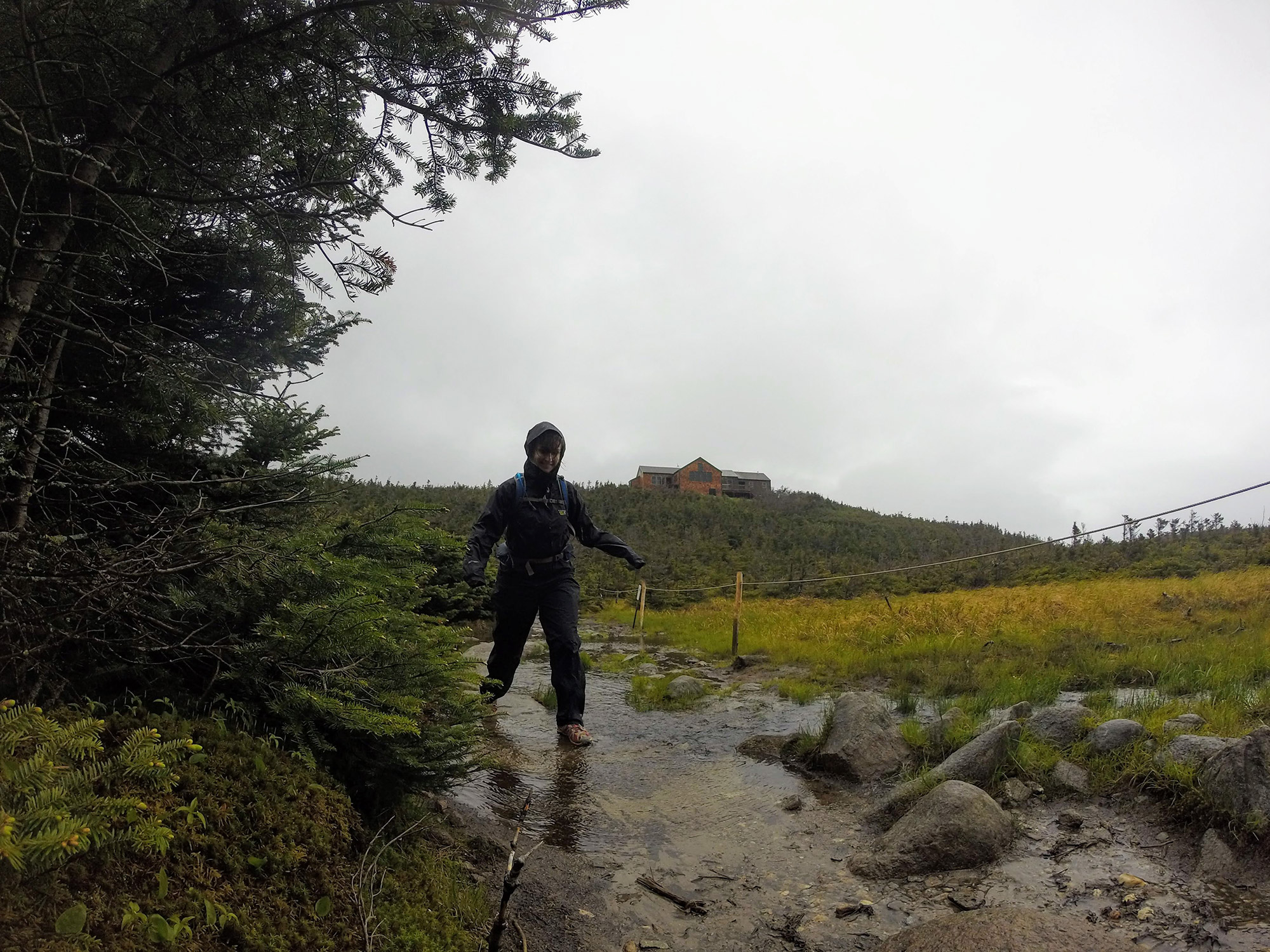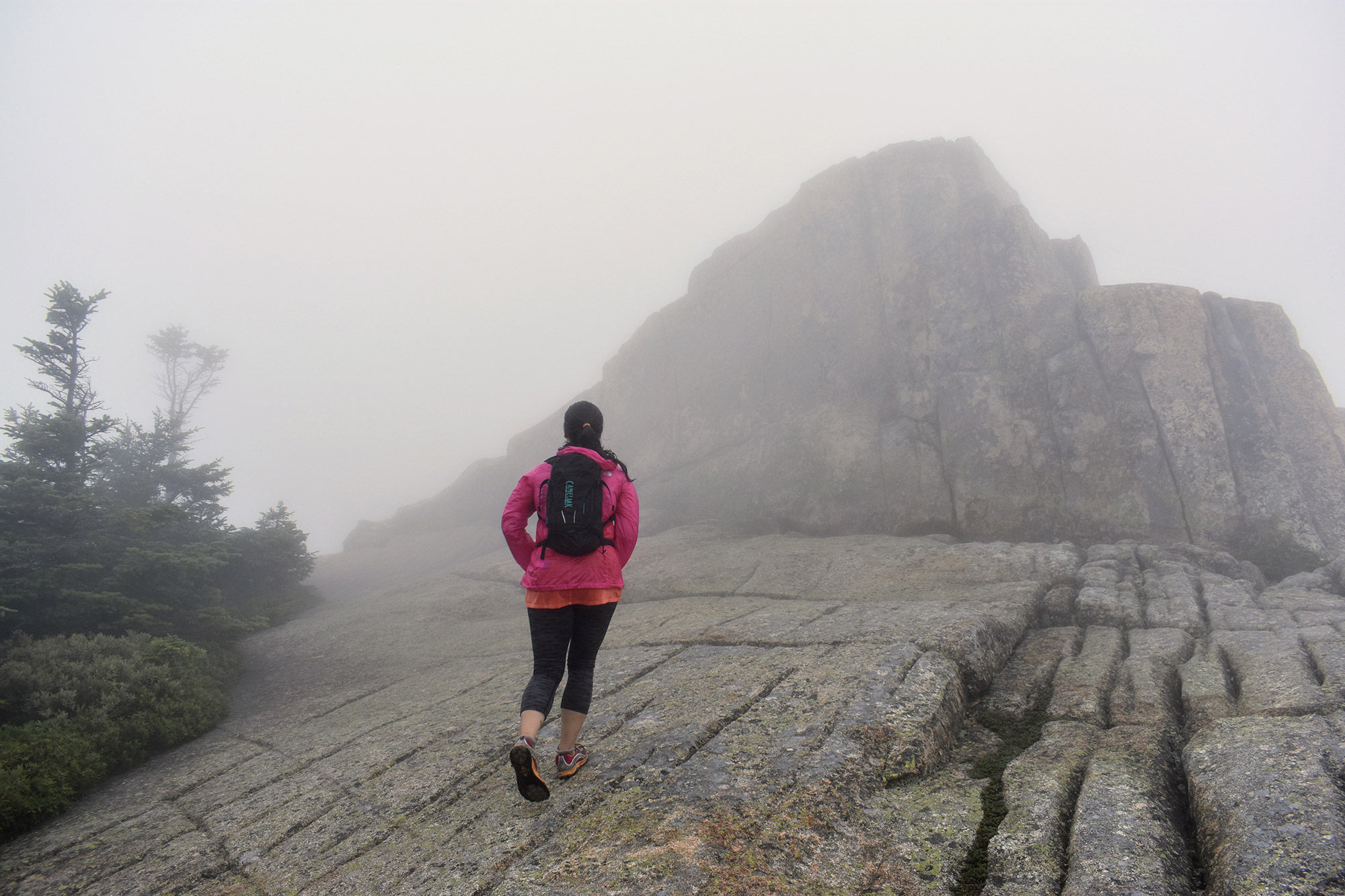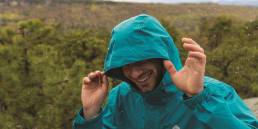Anybody who’s working through the Northeast’s 4,000-footers should have a pair of waterproof trail runners in their footwear arsenal. Lightweight and blocking out moisture, they’re the perfect shoe for getting to the summit and back quickly on those less-than-perfect spring, summer, and fall days. Don’t believe us? Here are eight reasons they’re the ideal rainy hike footwear.

1. Light is Right (Even When It’s Raining)
Everybody knows that a pound off your feet equals five pounds off your back. Since that adage holds true even when it’s dumping buckets, wearing these shoes is a great way to avoid a difficult choice between heavier hiking boots and lighter-but-not-waterproof trail runners. Not only will they allow you to maintain the hiking efficiency that you’re used to from regular trail runners, but they also provide almost as much weather protection as boots.
2. The Skinny on Being Heavy
Boots are also stiffer and less responsive, reducing your body’s efficiency. For every pound you put on your feet, you expend five-percent more energy. Five percent might not sound like much, but on a four-hour hike, that’s more than 10 minutes. Think of it as an extra 10 minutes to linger at the summit after the weather breaks.

3. Flash the Flats
Waterproof trail runners let you move fast and keep your feet dry on soggy spring days or when you encounter unexpected showers. Since they’re designed specifically for running, you can race across that ridge, sprint ahead of that shower, or see just how fast you can cover that flat.
4. Warming Up to the Idea
Although trail runners might not be as warm as boots, especially traditional full-leather hikers, their waterproof liners add just enough coverage to make them suitable for cool spring weather or a little bit of snow lingering high up on the ridge. Even better, they adapt great on those days that start cold but warm up fast.

5. Find Their Niche
Make the most out of waterproof trail running shoes by using them for the right types of hikes and conditions. Longer trips with lengthy stretches of flat ground and numerous short water crossings, like Bondcliff in New Hampshire’s White Mountains, are the perfect place to ditch the boots so you can cover the flats faster. They’re also ideal for shorter hikes, like Camel’s Hump in Vermont, where the support of boots isn’t needed—especially when you’re traveling through rainy and muddy conditions.
Pro Tip: When water levels are high, getting past a water crossing requires more than the right footwear. Check out this guide on safely crossing backcountry rivers.
6. No Need to Give ‘Em the Boot
Spring conditions—mud, rain, and repeatedly getting wet and drying—shorten the lifespan of both shoes and boots. Ironically, getting wet is what commonly leads to the demise of waterproof liners, as moisture brings minute dirt particles into the space between a boot’s exterior and its inner membrane. Here, the particles then slowly abrade the liner. Because waterproof trail runners are traditionally less expensive than boots, it is less painful to replace them when their time has come.

7. Quivering for a Pair of Trail Runners
Even though trail runners are typically less expensive than boots, no one wants to be constantly replacing a key piece of gear. One of the great things about them is, they are an essential arrow in your quiver, truly shining during mud season and rainy days. Because of this, it’s not uncommon to get a few years out of a pair.
8. The Right Choice for the Right Day
Maximizing your time in the mountains is all about matching the right gear with the right conditions. Waterproof trail runners are perfect for logging miles in damp spring weather or whenever your trip has a high probability of mud and rain. Although they’re a key piece of gear, a lot of occasions still call for traditional hiking boots, as well as non-waterproof trail runners.
We want to know which types of footwear you wear hiking. Let us know in the comments!
Tim Peck and Doug Martland
Tim and Doug met long ago at the Eastern Mountain Sports in Canton, Massachusetts. Bonding over a love of slick Quincy Quarry granite, White Mountain sufferfests, and scheming up adventures while folding tee-shirts, today Tim and Doug collaborate to write about their favorite outdoor activities and occasionally get nostalgic about tee-shirt tables.
Related Posts
1 Comment
Comments are closed.





Gotta disagree here. Waterproof increases moisture with decreased breathability, and you really can’t keep out water and mud even with waterproof trail runners. When it gets in, it stays in and soaks your feet